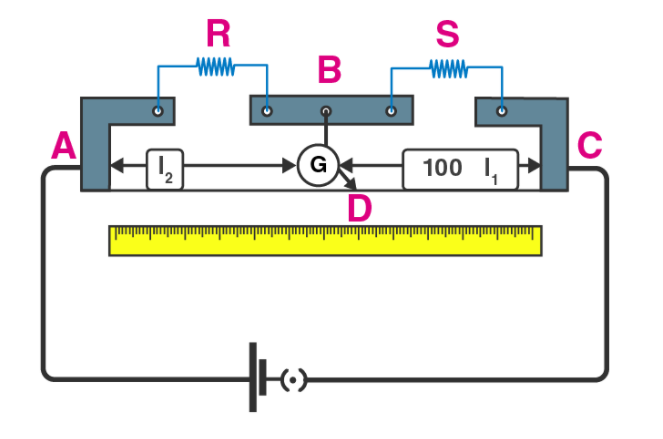
The correct answer is
a) the meter bridge can have no other neutral point for this set of resistances
c) when the jockey contacts a point on a meter wire to the right of D, current flows from B to the wire through the galvanometer

The correct answer is
a) the meter bridge can have no other neutral point for this set of resistances
c) when the jockey contacts a point on a meter wire to the right of D, current flows from B to the wire through the galvanometer